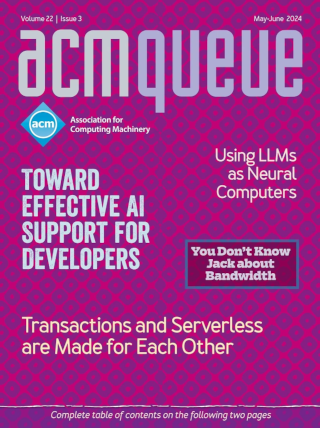BPM: The Promise and the Challenge:
It’s all about closing the loop from conception to execution and back.
Over the last decade, businesses and governments have been giving increasing attention to business processes - to their description, automation, and management. This interest grows out of the need to streamline business operations, consolidate organizations, and save costs, reflecting the fact that the process is the basic unit of business value within an organization.
Going with the Flow:
Workflow systems can provide value beyond automating business processes.
An organization consists of two worlds. The real world contains the organization’s structure, physical goods, employees, and other organizations. The virtual world contains the organization’s computerized infrastructure, including its applications and databases. Workflow systems bridge the gap between these two worlds. They provide both a model of the organization’s design and a runtime to execute the model.
People and Process:
Minimizing the pain of business process change
When Mike Hammer and I published Reengineering the Corporation in 1992, we understood the impact that real business process change would have on people. I say "real" process change, because managers have used the term reengineering to describe any and all corporate change programs. One misguided executive told me that his company did not know how to do real reengineering; so it just downsized large departments and business units, and expected that the people who were left would figure out how to get their work done. Sadly, this is how some companies still practice process redesign: leaving people overworked and demoralized, while customers experience bad service and poor quality.
Best Practice (BPM):
In business process management, finding the right tool suite is just the beginning.
Just as BPM (business process management) technology is markedly different from conventional approaches to application support, the methodology of BPM development is markedly different from traditional software implementation techniques. With CPI (continuous process improvement) as the core discipline of BPM, the models that drive work through the company evolve constantly. Indeed, recent studies suggest that companies fine-tune their BPM-based applications at least once a quarter (and sometimes as often as eight times per year). The point is that there is no such thing as a "finished" process; it takes multiple iterations to produce highly effective solutions. Every working BPM-based process is just a starting point for the future.
Under New Management:
Autonomic computing is revolutionizing the way we manage complex systems.
In an increasingly competitive global environment, enterprises are under extreme pressure to reduce operating costs. At the same time they must have the agility to respond to business opportunities offered by volatile markets.
Getting What You Measure:
Four common pitfalls in using software metrics for project management
Software metrics - helpful tools or a waste of time? For every developer who treasures these mathematical abstractions of software systems there is a developer who thinks software metrics are invented just to keep project managers busy. Software metrics can be very powerful tools that help achieve your goals but it is important to use them correctly, as they also have the power to demotivate project teams and steer development in the wrong direction.
The IDAR Graph:
An improvement over UML
UML is the de facto standard for representing object-oriented designs. It does a fine job of recording designs, but it has a severe problem: its diagrams don’t convey what humans need to know, making them hard to understand. This is why most software developers use UML only when forced to. People understand an organization, such as a corporation, in terms of a control hierarchy. When faced with an organization of people or objects, the first question usually is, "What’s controlling all this?" Surprisingly, UML has no concept of one object controlling another. Consequently, in every type of UML diagram, no object appears to have greater or lesser control than its neighbors.
CodeFlow: Improving the Code Review Process at Microsoft:
A discussion with Jacek Czerwonka, Michaela Greiler, Christian Bird, Lucas Panjer, and Terry Coatta
Delivering a new set of capabilities for managing and improving Microsoft’s code-review process was the primary goal right from the start. In the course of accomplishing that, much was also learned about certain general code-review principles. In fact, subsequent research has offered surprising evidence of just how similar the impact can be when many of these principles are followed at companies other than Microsoft.






